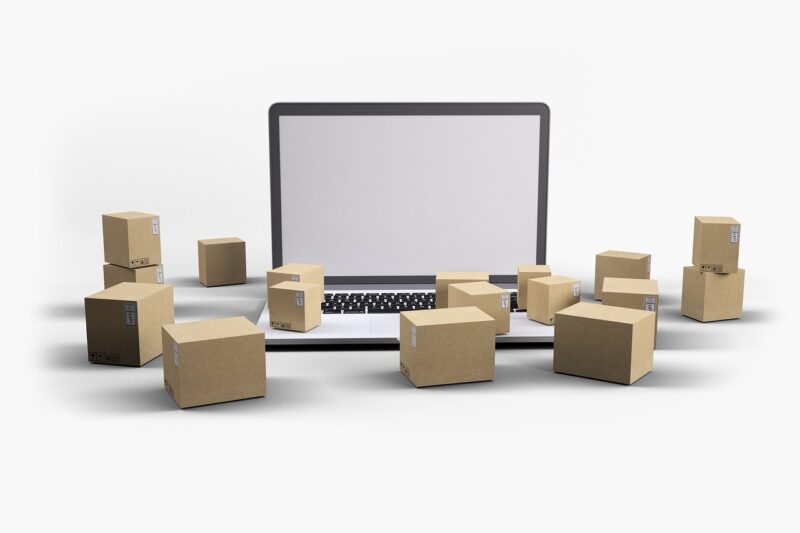The Rise of E-Commerce: How Online Shopping is Changing Consumer Behavior
November 17, 2024

In the 21st century, e-commerce has revolutionized the way we shop, turning our living rooms into marketplaces and redefining consumer behavior. With just a few clicks or taps, we can now buy everything from groceries to high-end electronics, all without worrying about store hours or geographical limitations. This shift towards online shopping is not just a trend; it’s a profound transformation that affects how we perceive value, make purchases, and interact with brands.
1. The Evolution of E-Commerce
The rise of e-commerce began in the late 1990s with the advent of secure online payment systems, allowing consumers to shop online with confidence. Companies like Amazon and eBay pioneered this space, offering vast selections of products that traditional brick-and-mortar stores could not match. Now, e-commerce encompasses everything from straightforward retail purchases to complex online marketplaces.
The evolution has spurred the development of various models such as:
- Business-to-Consumer (B2C): This model involves businesses selling directly to consumers, which is the most commonly recognized form of e-commerce today.
- Consumer-to-Consumer (C2C): Platforms like Etsy and eBay facilitate transactions between individual consumers.
- Business-to-Business (B2B): Companies selling to other companies, often through wholesale channels or specialized online marketplaces.
As technology advances, e-commerce continues to grow, adapt, and innovate. Today, we even see social commerce, where platforms like Instagram and Facebook allow users to shop directly from their feeds.
2. How Online Shopping is Changing Consumer Behavior
The interactivity and convenience of online shopping have changed the way consumers behave in several significant ways:
A. Convenience Over Everything
Consumers now prioritize convenience in their shopping experiences. With e-commerce, they can browse and purchase products from the comfort of their homes, any time of the day or night. This ease of access has led to an increase in impulse purchases and a shift away from traditional shopping trips, which require more effort and time.
B. Price Sensitivity and Comparison Shopping
The internet gives consumers unparalleled access to information and price comparisons. Shoppers can easily compare prices across different platforms, encouraging them to seek the best possible deal before making a purchase. This transparency has made consumers more price-conscious, which can pressure businesses to remain competitive in pricing.
C. Personalization and Consumer Expectations
As e-commerce grows, so does the expectation for personalized experiences. Online retailers leverage data analytics to tailor product recommendations to individual shoppers’ preferences. Consumers now expect brands to understand their needs, creating a more personalized buying journey compared to traditional retail environments.
D. Trust and Brand Loyalty
While the convenience of online shopping is crucial, trust plays an equally important role. Consumers are more inclined to purchase from brands that offer product reviews, clear return policies, and secure payment options. As a result, building trust has never been more important, and brands that succeed in this area often enjoy higher customer loyalty.
3. The Impact of Mobile E-Commerce
With the majority of the global population owning smartphones, mobile e-commerce (m-commerce) is rapidly gaining ground. This shift in consumer behavior reflects changing preferences in how and when people shop.
- On-the-Go Shopping: People are increasingly shopping on-the-go, leading to higher traffic during off-hours, such as early mornings or late evenings. Mobile optimization is no longer an option but a requirement for brands seeking to engage with this consumer base effectively.
- Influencer Marketing and Social Commerce: Social media influencers significantly impact purchase decisions, with many transactions happening directly within social media platforms. As this trend continues, businesses are compelled to adapt their marketing strategies to include social commerce elements.
The rise of m-commerce reflects a shift in consumer behavior, where ease of use and accessibility reign supreme.
4. Challenges and Concerns of E-Commerce
Despite its advantages, the rise of e-commerce presents several challenges that consumers and businesses must address:
A. Security and Privacy Issues
Online shopping often involves sharing personal information, which raises concerns about data security and privacy. Consumers may hesitate to provide their information unless they are assured that their data is protected. Businesses must prioritize cybersecurity and clear communication about their privacy policies to build consumer trust.
B. Overwhelm of Choices
The abundance of choices in e-commerce can lead to decision fatigue. With countless options available at their fingertips, consumers may struggle to make informed decisions, often resulting in abandoned carts and frustration.
C. Environmental Impact
While e-commerce reduces the need for physical store spaces, it raises its environmental challenges, primarily due to packaging waste and carbon emissions from delivery services. As awareness of sustainability grows, consumers are starting to consider the ecological effects of their online shopping habits.
5. The Future of E-Commerce
The rise of e-commerce is unlikely to plateau anytime soon. As technology continues to evolve, we can expect:
- Integration of Artificial Intelligence: AI-driven chatbots and personalized shopping experiences will further enhance customer engagement, leading to sales conversions.
- Virtual and Augmented Reality: These technologies will allow consumers to visualize products in their spaces before purchasing, bridging the gap between online and offline shopping experiences.
- Increased Focus on Sustainability: Brands that demonstrate sustainable practices in their sourcing and shipping processes will likely win over conscious consumers.
As we look ahead, e-commerce will continue to shape consumer behavior and redefine the shopping experience. The companies that embrace these changes will be the ones that thrive in the evolving marketplace.
Conclusion
The rise of e-commerce has fundamentally changed how consumers shop and interact with brands. The convenience, personalization, and availability of information have shifted consumer behavior toward online purchasing. While challenges persist, the future of e-commerce holds promising opportunities for businesses that can adapt and evolve alongside consumer expectations. As technology continues to innovate, so too will the landscape of shopping, making it imperative for both consumers and businesses to keep pace with the shifting dynamics of the digital marketplace.






